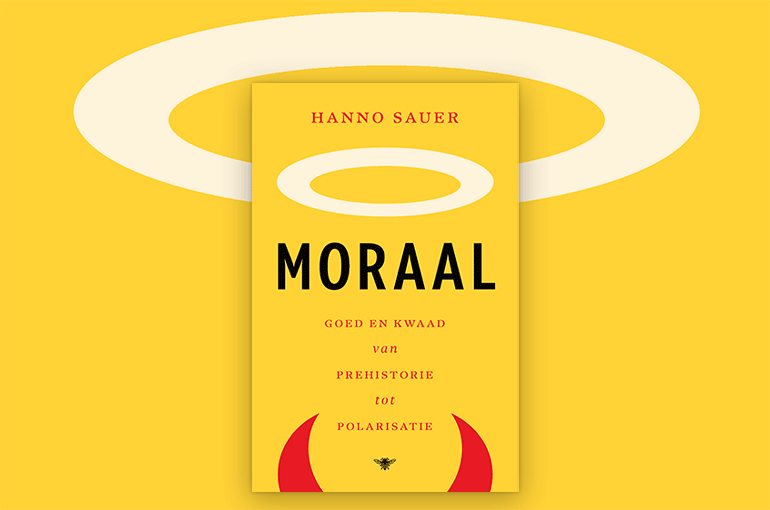Moraal: Goed en kwaad van prehistorie tot polarisatie
Philosopher Hanno Sauer writes book on 5 millions years of morality

Our norms and values allow us to live together. But how do we decide what is wrong and right? Hanno Sauer is a philosopher at Utrecht University and decided to look back in our history for answers. Way back. In his book Moraal: Goed en kwaad van prehistorie tot polarisatie (Moral: Good and Evil from Prehistory to Polarisation) that will be published in Dutch this month, Sauer describes the key moral transformations we have undergone from 5 million years ago until now. “It’s about who we are and where we come from. We can only properly understand things that have a history if we understand and appreciate that history.”

Norms and values from evolution to modern society
Starting 5 million years ago, then 500,000 years ago, 50,000, 5,000, 500, 50, and 5 years ago - Moral describes in seven chapters how our moral sense and thinking was shaped and changed over the course of our history. From the evolution of cooperation to the development of punishment and the emergence of inequality to the dawn of modernity.
Sauer explains: “At the fundamental level, all humans have at all times and across cultures embraced the same basic values. We all value freedom, safety, pleasure, justice, and benevolence. But we have prioritized and implemented these values in many different ways. My book is telling the story of how the shape of these values has changed, depending on the kind of society we have built, its institutions, size, economy, and technology.”
Philosophical perspective and scientific data
In his book Sauer looks at our moral thinking and acting from a philosophical perspective but with scientific data. When asked what impact philosophers have on our moral thinking, he answers: “Philosophers can articulate how our normative infrastructure works, and really try to work out the intricate details of our norms and values and what they entail. And they can also try to bring various disciplines into dialogues, find connections between them and try to extract a bigger picture of what we are like.”
Drawing lessons from the past
It is always difficult to extract lessons for the future from the past, Sauer finds. “I think the main thing that the history of morality can teach us is this: all of our moral values and principles have a dark side. So for any moral gain, any instance of progress, there is usually a corresponding loss, or at least the potential for backlash and excess. Even the worst deeds and policies usually have a moral motivation behind them. Morality is a powerful social technology, but, just like anything and everything, it can be abused and distorted, and we need to be wary of that possibility.”
We all value freedom, safety, pleasure, justice, and benevolence, but we have prioritized and implemented these values in many different ways.
Sauer had the idea to write this book for a very long time: “When I was young I wanted to become a novelist and come up with fictional stories. I then became the next best thing: a philosopher. So for a really long time I had that idea of writing a book that feels a bit different, that doesn’t sound like a standard academic monograph, but has a more experimental, literary approach.
The story behind modern society
“I’m also interested in what goes on in contemporary society and politics. In the end, I found a way of combining these two things, by using storytelling to explain where our current society comes from, and why it works the way it does.”
“I really tried to tell humanity’s story in a way that is scientifically solid and conceptually precise, but at the same time has an interesting idea or a novel, surprising insight on every other page.” Sauer answers when asked what he aims for with Moral. “If people come away from the book with the impression that they understand evolution, or the mind, or politics, or history a little better than before, then I’m pleased.”

